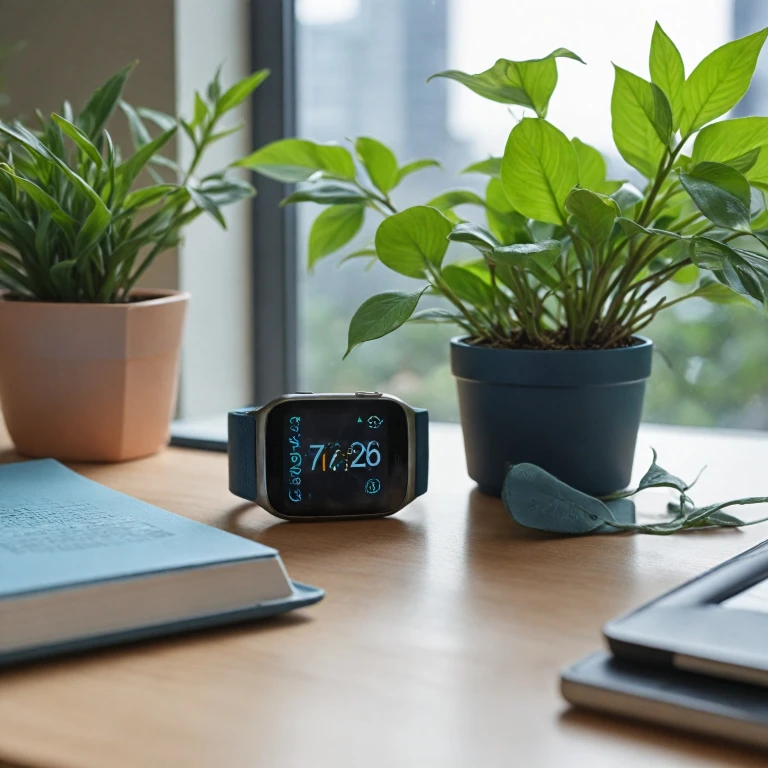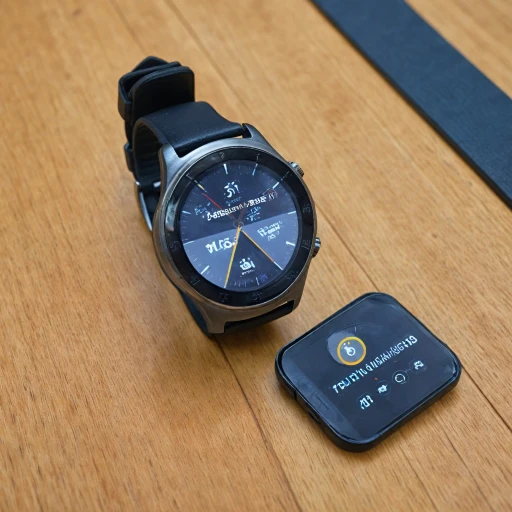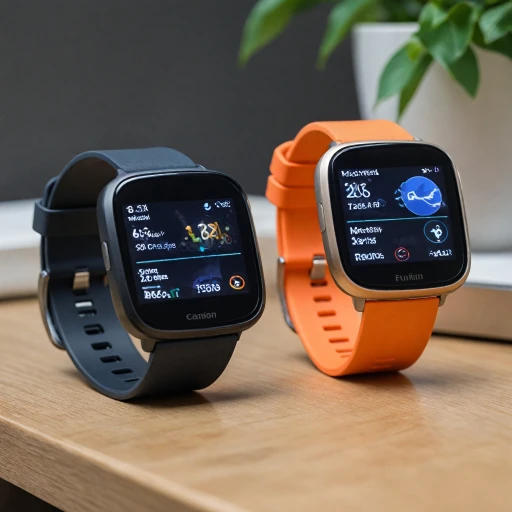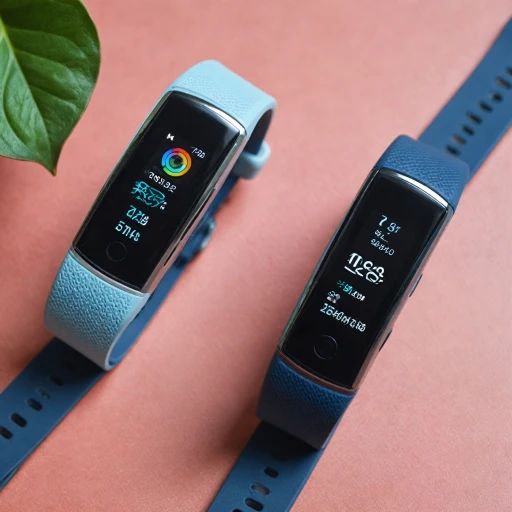Understanding the Need for a Fitbit Reset
Evaluating When a Reset is Necessary for Your Fitbit
Understanding why you might need to reset your Fitbit device is essential for maintaining its performance and ensuring accurate data tracking. There are specific scenarios which often signal the need for a reset.
Firstly, consider a reset if your Fitbit tracker is experiencing consistent syncing issues with the app or if the device isn't responding to usual operations, such as not charging even when connected to the charging cable. A reset can often rectify these problems, allowing the tracker to function smoothly again.
Another common reason for a reset is if the Fitbit screen is frozen or displaying glitches. In some cases, simply pressing and holding the button on your Fitbit Charge or Luxe for a few seconds can resolve the issue, making the reset Fitbit process effective in bringing back its responsiveness.
Moreover, if you've updated your Fitbit software or modified settings, such as changing the settings app configurations, and notice performance deterioration or unusual behavior, performing a reset might help stabilize your device.
Finally, for users planning to give away or sell their Fitbit, it's crucial to perform a reset to remove all personal data and settings. In such cases, opting for a factory reset ensures the device is clean and ready for its new user.
For further insights into Fitbit functionalities and comparisons, don't hesitate to check out
our in-depth comparison between Fitbit Sense 2 and Versa 4 models.
Different Types of Fitbit Resets
Exploring Various Reset Options for Your Fitbit
When it comes to giving your Fitbit device a fresh start, understanding the different types of resets available is crucial. Each reset type comes with its own set of actions and results. Knowing which one to use can help resolve issues effectively while safeguarding your data.
Generally, there are two primary reset categories you might consider:
- Soft Reset: This is essentially a device restart that can help fix minor glitches without impacting your tracked data. It involves turning off the device momentarily and then powering it back on. It’s a simple process that’s akin to rebooting a computer.
- Factory Reset: A more drastic measure, a factory reset erases all personal data, restoring the Fitbit to its original settings. This can be useful if you’re dealing with more significant problems, but should be your last resort due to its data-wiping nature.
For many issues, a soft reset might be the best starting point. If you’re experiencing persistent problems or planning to pass on your device, a factory reset could be the way forward.
Learning how these resets work will give you confidence in maintaining your Fitbit. With this knowledge, you can handle many common Fitbit challenges with ease. Additionally, for those interested in the newest features, you might want to explore what's new in the
Fitbit Versa 5 features to make an informed decision on potential upgrades.
Step-by-Step Guide to Soft Reset Your Fitbit
Soft Resetting Your Fitbit for a Fresh Start
Sometimes, giving your Fitbit tracker a simple restart is all it needs to function optimally. This process does not erase data from your device, unlike the factory reset which wipes your personal settings and information.
A soft reset, often referred to as a restart, is effective for solving minor glitches like slow performance or connectivity issues. To execute a soft reset on your Fitbit device, carefully follow these steps:
- Connect the Charging Cable: Ensure your Fitbit is connected to the charger. Insert one end of the cable into your Fitbit and the other end into a USB port. A secure connection is essential for the process.
- Locate the Button: Find the button on your Fitit device. Depending on the model, it might be on the side or at the back. For example, on devices like the Fitbit Charge, it is typically on the side.
- Press and Hold the Button: Press and hold the button for approximately 10 seconds. The screen should go blank, indicating the device has initiated the restart process.
- Look for the Logo: Continue holding the button until the Fitbit logo appears on the screen. On models like the Fitbit Luxe, this indicates a successful restart.
- Release the Button: Once the logo appears on your screen, release the button. Your Fitbit will complete the restart and turn back on.
A soft reset should suffice to reestablish normal function without impacting your stored data. However, if problems persist, you may need further troubleshooting. Explore how to
track the best solutions for your specific Fitbit series model.
Remember, keeping your device charged and periodically rebooted can prevent common issues and extend its lifespan, ensuring your Fitbit supports your health and fitness goals efficiently.
Executing a Complete Erasure of Your Fitbit
When you need to return your Fitbit device to its original settings or are preparing it for resale, performing a factory reset is essential. This process will wipe all data from the tracker, giving it a fresh start. Here's a method to ensure you complete a successful factory reset.
- Preparation and Safety Measures: Before executing the factory reset, ensure your Fitbit is adequately charged to prevent any interruptions during the process. Using the charging cable, connect your device to a power source.
- Accessing the Correct Settings: Navigate to the settings app on your Fitbit device. Depending on the series, the exact location of the factory reset option may vary, but it typically resides under 'About' or 'Device Info'. Tap to enter and proceed.
- Using Button Combinations: For certain models, such as the Fitbit Charge, you'll need to rely on a button sequence.
- Press and hold the button for around 8-10 seconds until you see the Fitbit logo appear on the screen.
- Once the logo appears, release the button, and your device will commence the reset.
- Final Steps and Verification: As the tracker restarts, it should display the original setup screen. This indicates the reset was successful. Note that all personal data will have been removed from the device.
When the need arises for a deeper cleanse beyond a restart, a factory reset becomes the solution. Ensure data you want to save is removed prior to initiating the reset. Utilizing the tips above will maintain your Fitbit's performance, preparing it for the next phase of its use.
Troubleshooting Common Fitbit Reset Issues
Troubleshooting Common Issues After a Fitbit Reset
After successfully conducting a reset on your Fitbit, you might encounter a few common issues. Understanding these problems and how to handle them can help you ensure your device functions optimally.
- Device not syncing: If your tracker isn’t syncing after a reset, try restarting your device. Remove the Fitbit device from the charging cable, then press and hold the button until the Fitbit logo appears on the screen. Release the button and wait for a few seconds. Often, a simple restart can solve the syncing issue.
- Unresponsive screen: An unresponsive screen is frustrating. To address this, press and hold the button for 10-15 seconds and see if the Fitbit logo appears. If the screen remains unresponsive, check if the device is charged properly using the charging cable, as low battery might be an issue.
- Failure to restart: If your reset Fitbit won’t restart, ensure that you have held the button long enough during the restart process. The logo should appear on the screen before you release the button. If problems persist, a factory reset may be necessary, but remember that this will erase all data stored on the device.
- Data not saving: Sometimes, the Fitbit device fails to save data post-reset. Make sure that the device settings are properly configured. It could also be beneficial to check if the device is correctly paired with the Fitbit app on your phone.
A smooth reset process often prevents these issues, but if they do occur, these steps should assist you in maintaining your Fitbits functionality. For series like the Fitbit Charge and Fitbit Luxe, specific procedures might vary, so ensure to consult your device's guidelines.
Maintaining Your Fitbit Post-Reset
Ensuring Optimal Performance Post-Reset
Once you've successfully reset your Fitbit device, it's important to maintain its performance to maximize its lifespan and effectiveness. Here's how you can keep your tracker running smoothly after a reset:
- Regular Charging: Always ensure your Fitbit is adequately charged. Utilize the provided charging cable and plug it securely into a power source to avoid unnecessary shutdowns or data loss. A fully charged device can prevent unexpected issues from cropping up in your daily use.
- Update Software: After a reset, check for any available software updates through the settings app. These updates often contain essential enhancements and bug fixes that can improve your device’s functionality.
- Consistent Syncing: Make it a habit to regularly sync your Fitbit with your smartphone. This practice helps keep your data current and could assist with troubleshooting if needed in the future.
- Monitor for Issues: Be attentive to how your Fitbit behaves post-reset. If you notice that the device unexpectedly restarts or if the Fitbit logo appears on the screen without you pressing the button, it may be time for further troubleshooting. This ensures any underlying issues are promptly addressed.
- Keep Clean and Secure: Keep the screen and the body of your Fitbit clean and free from debris. This can prevent damage to its components, such as the charging ports, and ensure a clear display.
- Personalize Settings: After resetting, revisit your Fitbit settings. Customize the settings to fit your lifestyle, which includes setting reminders and goals that encourage consistent use.
Maintaining proper care after resetting your Fitbit will not only help in enhancing its battery life but also ensure that it remains a reliable companion in tracking your health metrics.





